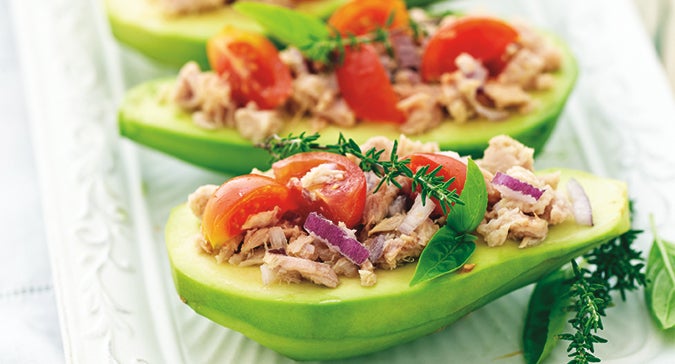Influential demographic groups change the playing field for everyone
It has always been important to understand what guests want, but it’s never been more challenging to keep up with how they define three fixed values: convenience, value and quality.
“Technological advances; changing consumer access to and experience of food; globalization; and cultural trends around health, wellness and sustainability are shifting consumer understanding,” says Melissa Abbott, Vice President of Culinary Insights at The Hartman Group Inc., based in Bellevue, Washington.
The generational changing of the guard is one of the biggest drivers of evolving values. Canadian Millennials, born between 1977 and 1992, have more spending power than their parents did at their age, according to a 2014 report by BMO Economics. In 2012, the median net worth of a family headed by someone between 25-34 was $52,000, almost double that—adjusted for inflation—of a family headed by someone the same age in 1984, the report says.
They have the cash, and they’re willing to spend it dining out. “For millennials, it’s OK to eat outside the home several times a week,” says Donna Dooher, president and CEO of Toronto-based Restaurants Canada. “Eating out is part of their lifestyle.”
The rising expectations of an influential demographic group lifts expectations for an entire population. “Today, the expectation is that a consumer can have it all—convenience, value, and quality—in one meal, one restaurant experience,” says Rachel Kalt, Senior Strategist with San Francisco-based The Culinary Edge, a restaurant consultancy.
Understanding the new definition of “value”
Once tied primarily to portions and prices, value is defined through the ability to customize ingredients and portion sizes, as well as perceived quality, social responsibility, freshness and craftsmanship.
“Value is more multidimensional today,” says Kelly Weikel, Technomic’s Director of Consumer Insights. “Diners are now asking: ‘What makes this concept special?’ They’re looking for restaurant brands that align with their values: fair trade, employee treatment and sustainability. They want to feel good about their food choices.”
Technomic’s 2014 Canadian Value and Pricing Trend Report, shows 41% of diners say customization is important or extremely important in creating value. The figure is higher for women, 45% of whom called customization key to good value.
Why? The more customers can determine what’s in their meal, the more they’re likely to enjoy it and appreciate its value. In fact, 68% of diners said customization is important because it ensures a meal will fit their preferences; 61% said customization ensures a meal will include ingredients they like. Customers link portion size to value as well, as 39% of respondents placed high importance on different portion sizes at different prices.
Family options also create value for Canadian diners. According to Technomic’s 2014 and 2015 Consumer Trend Report, 69% say a family atmosphere creates good value.
Flavour, freshness and preparation affect the perception of quality
Quality is tied to the value proposition for diners. NPD Group, the Port Washington, New York-based research firm, says food quality is still the most important value driver when choosing restaurants, but the landscape is changing.
“Diners are defining quality differently today,” Technomic’s Weikel says. “It’s multidimensional with health, freshness, sourcing, and every point of impact—where the food is grown, how it’s distributed, then prepared in the back of house.” Transparency and demonstrating quality are key here.
Flavour innovation also offers a way to express quality. In its 2016 food-trends report, Technomic cites the “Sriracha effect,” in which global ingredients add premium value because they’re perceived as exotic. The challenge is to stay ahead of evolving flavour trends. In the world of global hot sauces, for example, that means looking beyond Sriracha to ingredients such as gochujang, sambals, harissa and ghost peppers.
Another quality component: ingredient freshness and preparation, particularly preparing items on-site and from scratch, according to Technomic’s 2015 Canadian Value & Pricing Consumer Trend Report.
Concepts like Toronto-based Freshii, with more than 100 locations worldwide, feature ingredients such as quinoa, kale and tofu, and invites diners to customize with everything from lemongrass sauce to crisp wontons and sesame seeds.
Customers are pushing for technology-driven convenience
Portability, time-savings, and order accuracy once were key markers of convenience. Now the on-demand generation is taking over. Again, younger people are leading the way: Restaurants Canada research shows that 61% of 18- to 34-year-olds have order takeout or delivery online in the past year, compared with 24% of Canadians ages 50 or older.
Consider adding other convenience-minded options that meet consumer demands and add revenue. Takeaway catering and bundled family meals for takeout make life easier for customers. Other ways to serve up convenience include offering snacking, grab-and-go, and quick-turn menu items—and promoting them on menus, table tents and via social media.
It might take work and planning, but Dooher is confident independent operators are up to the task. “Independent operators are innovative and resilient,” she says. “They usually come up with new ways to do business.”










